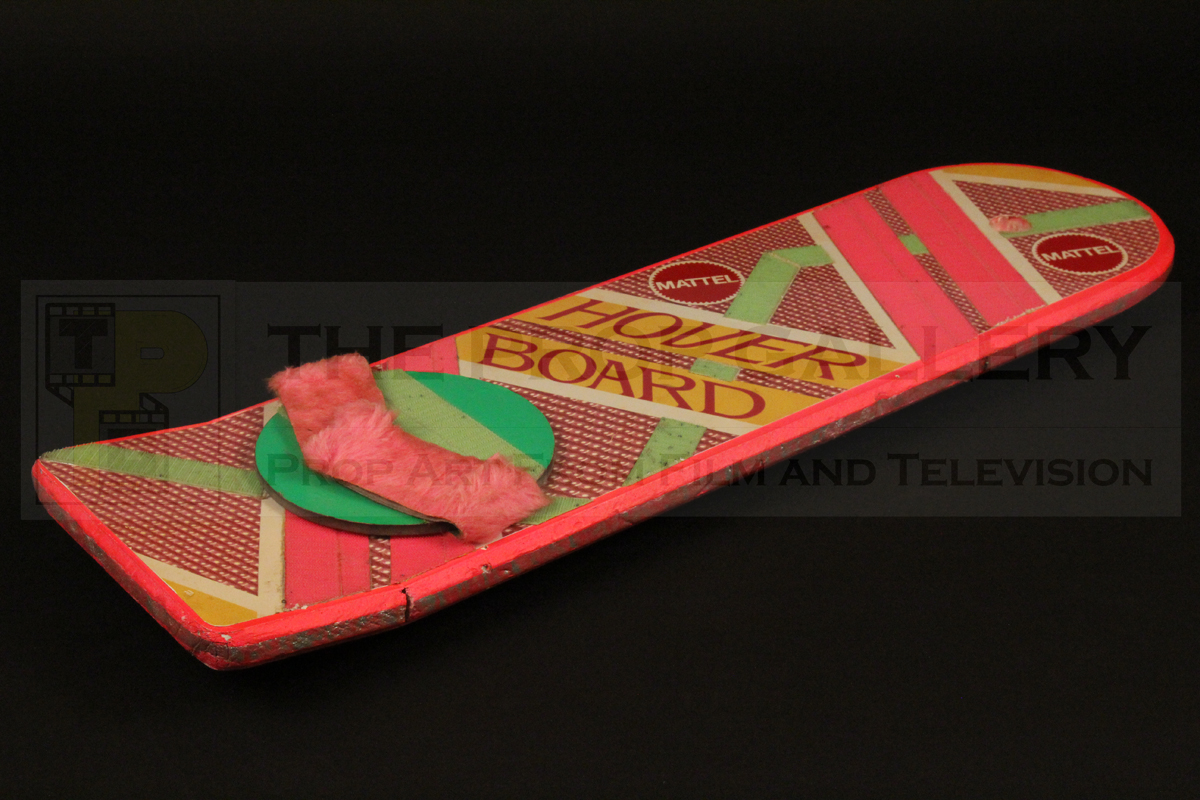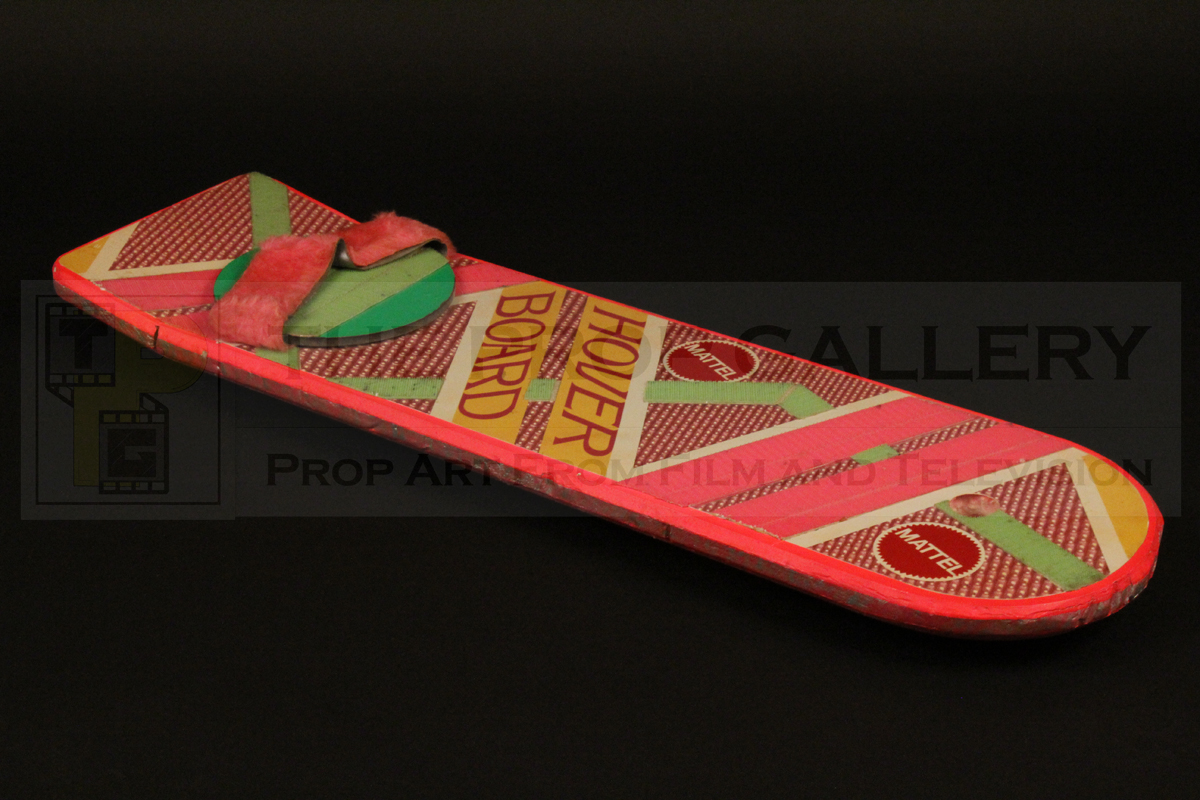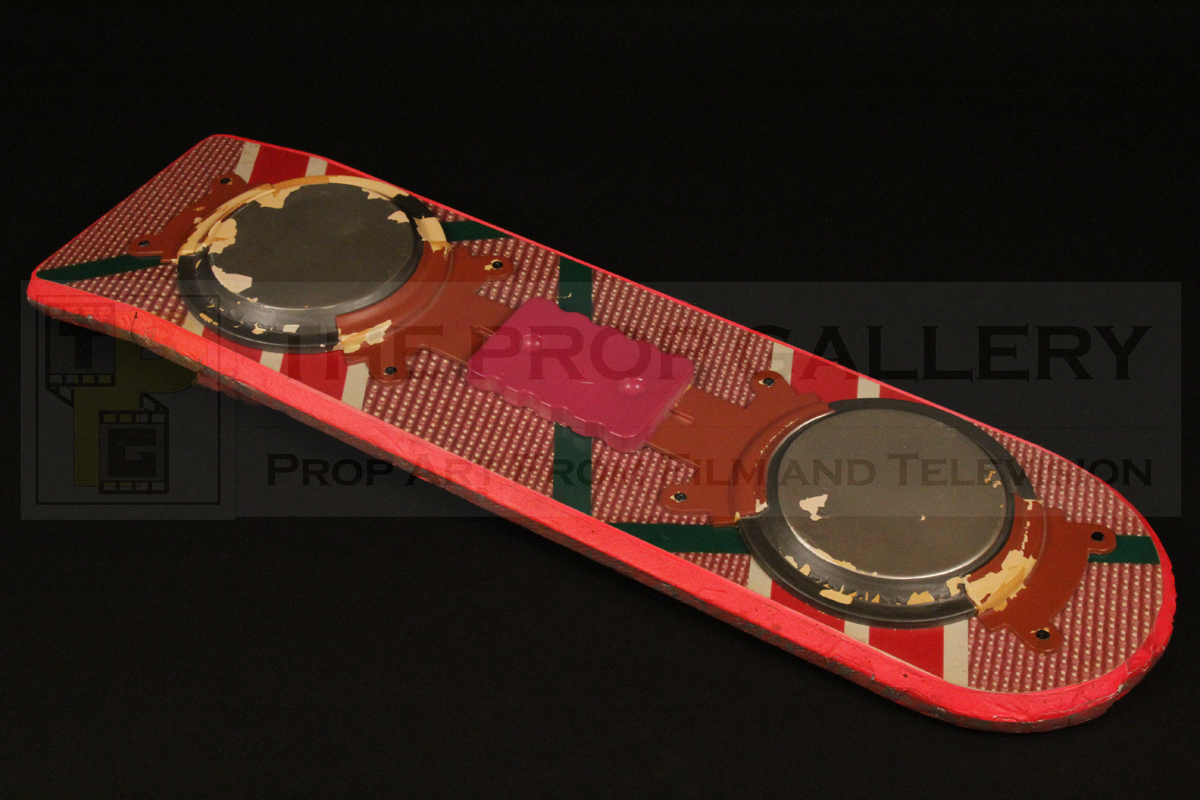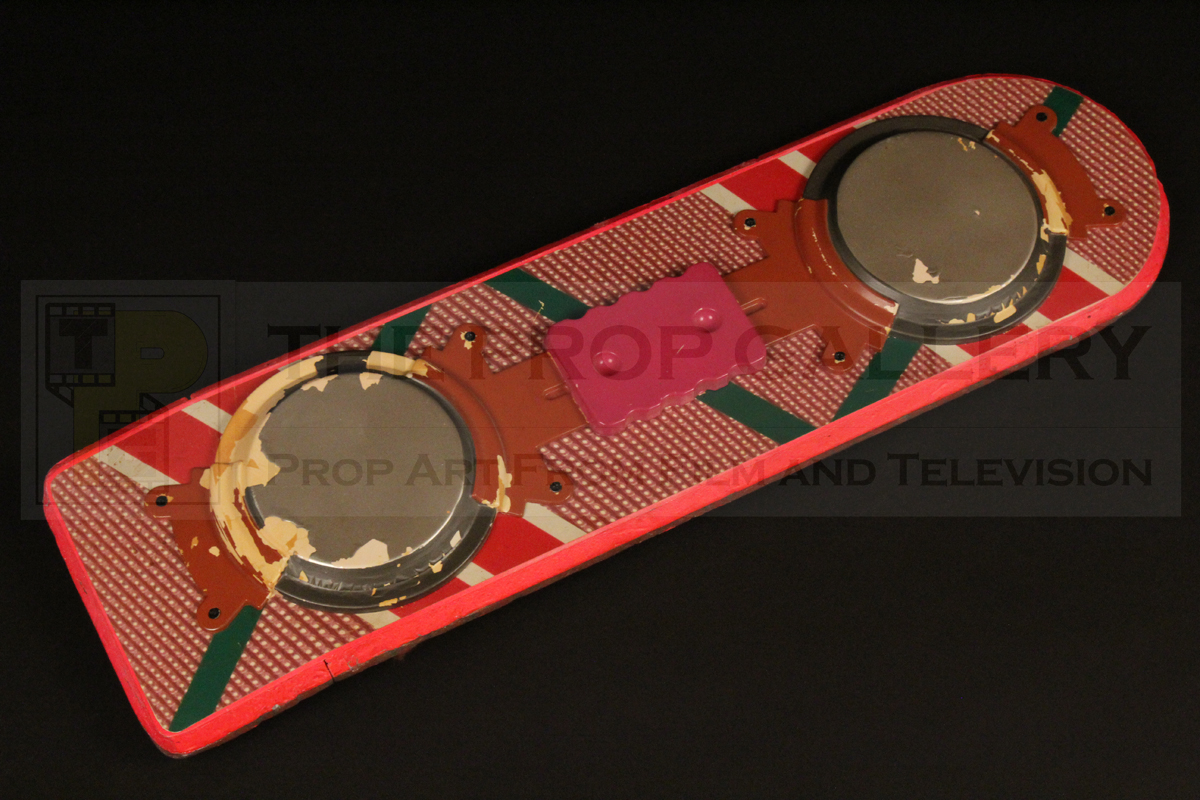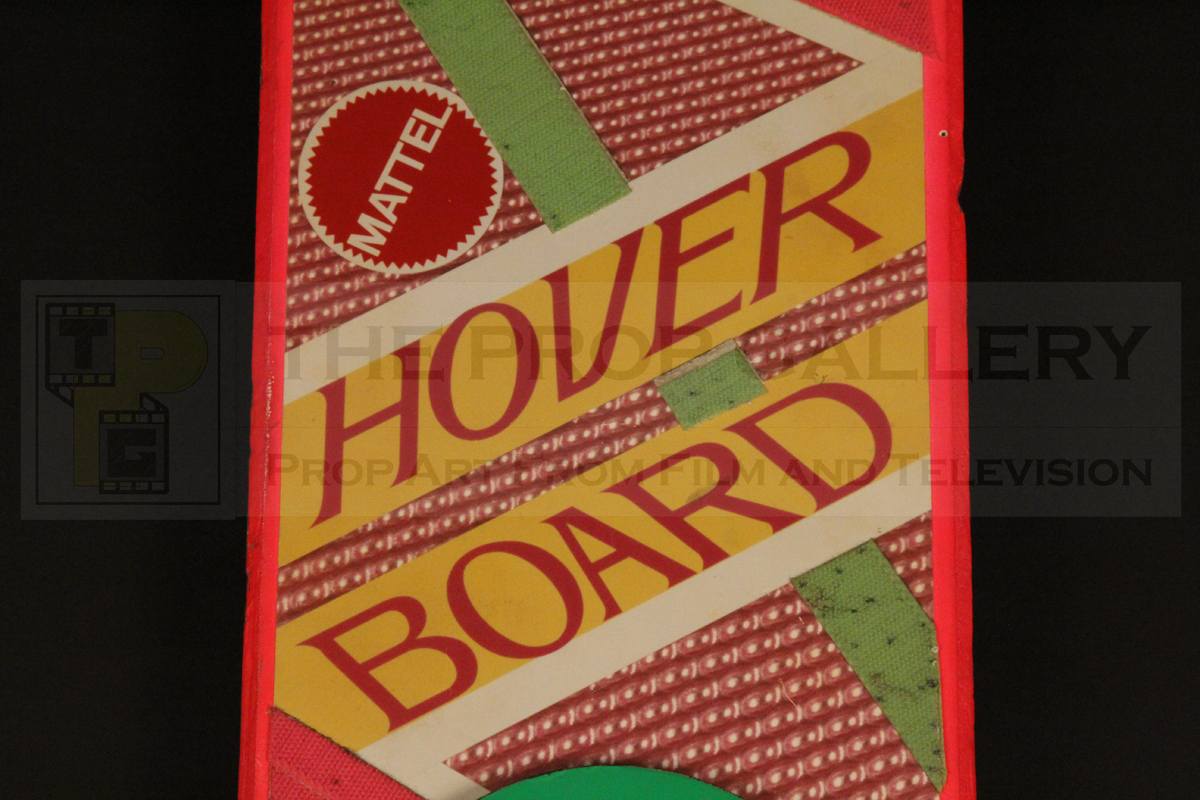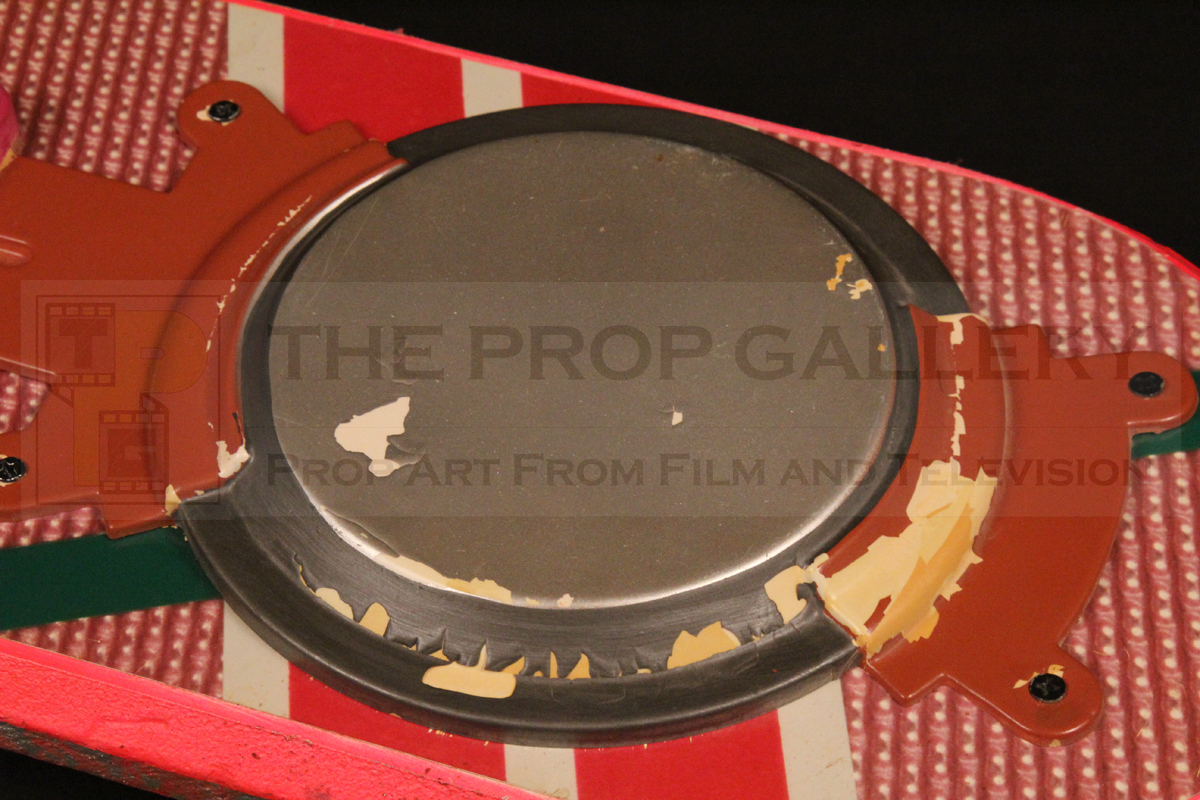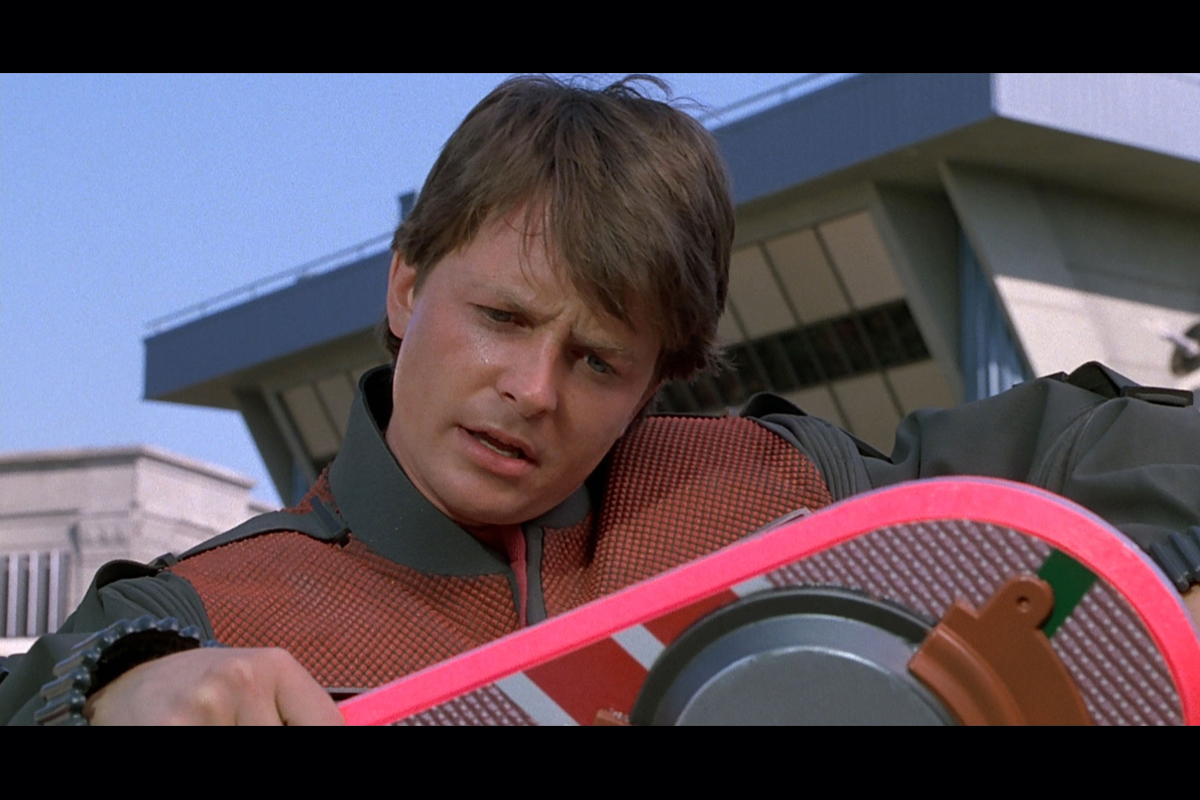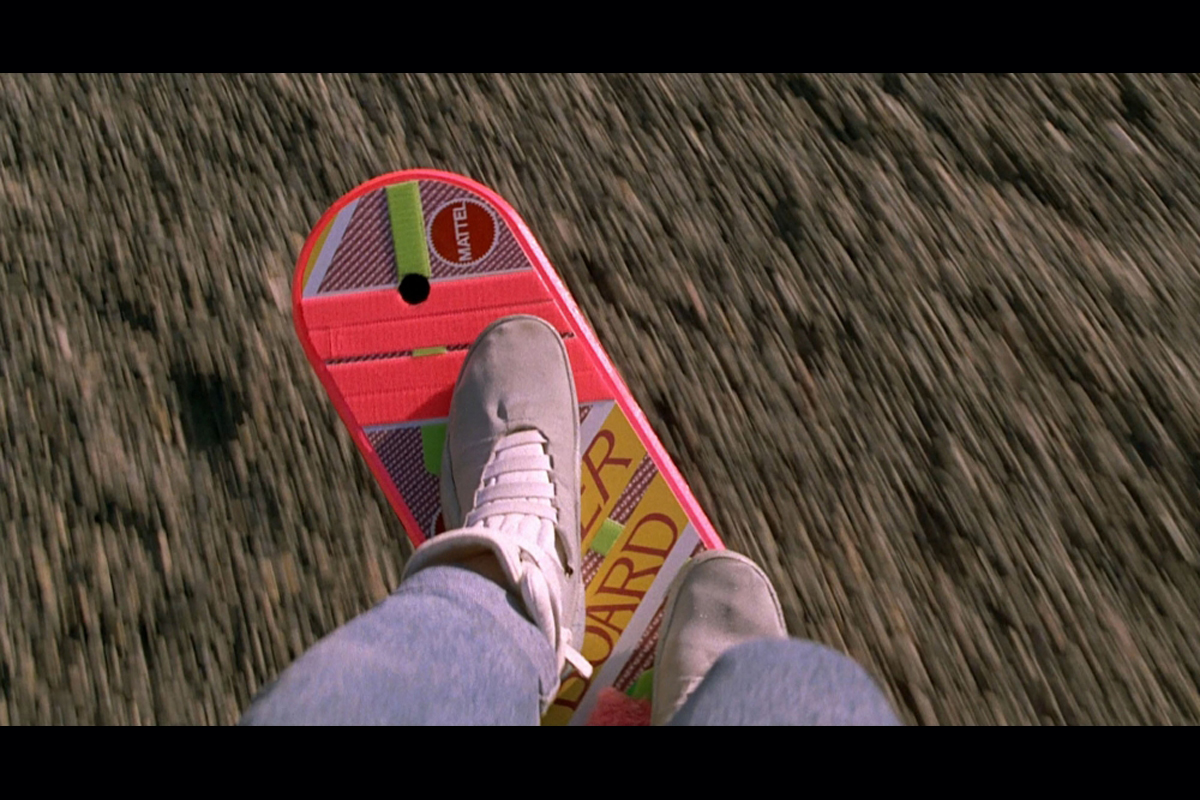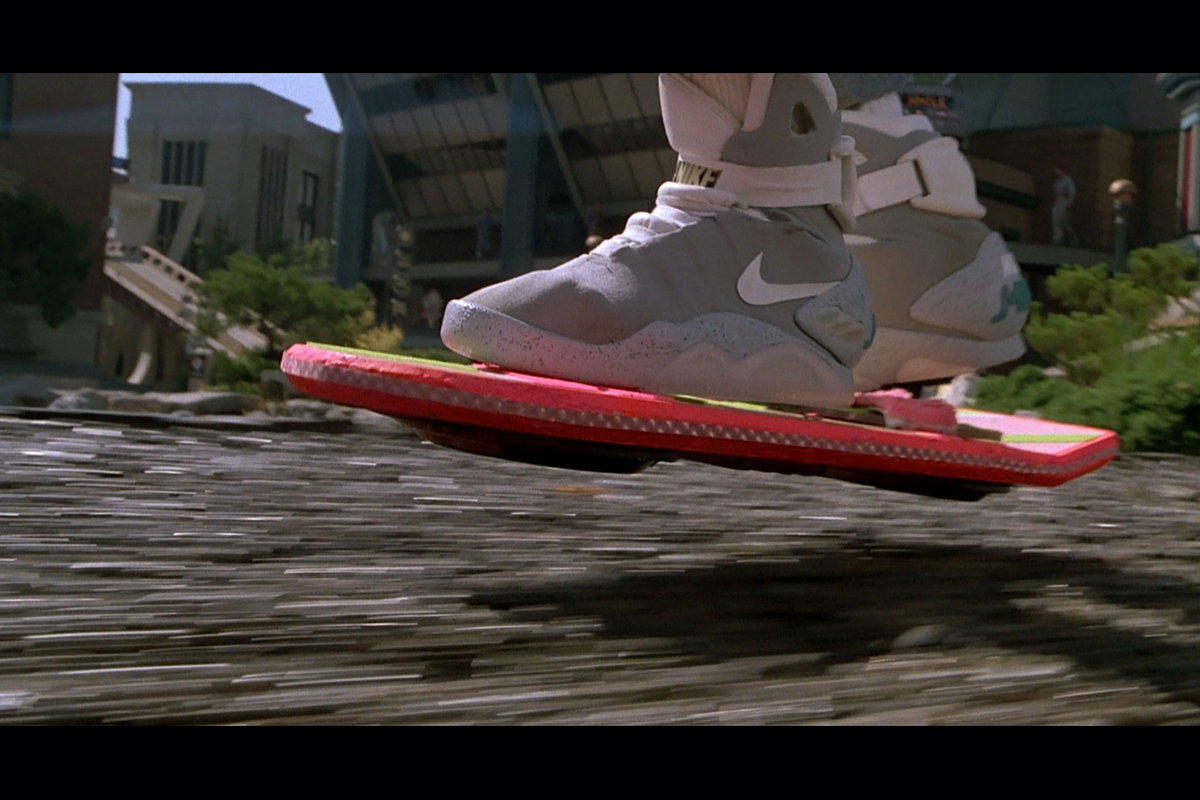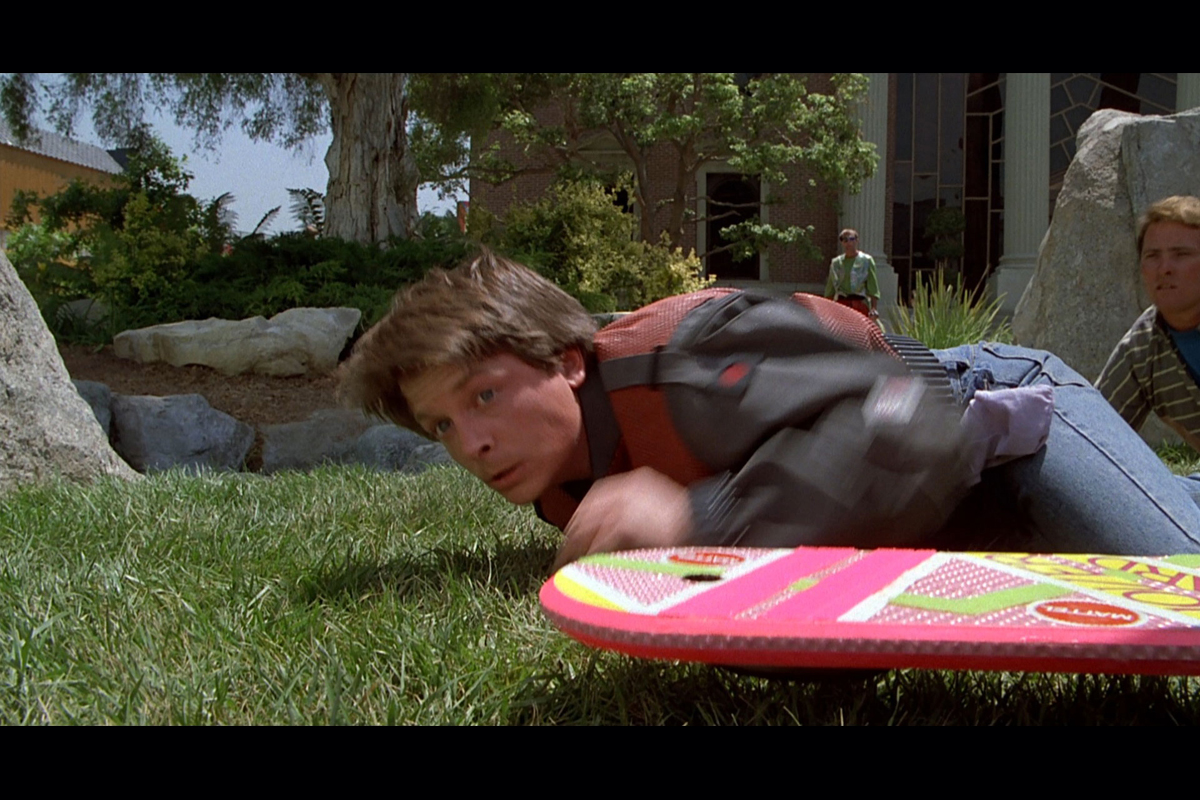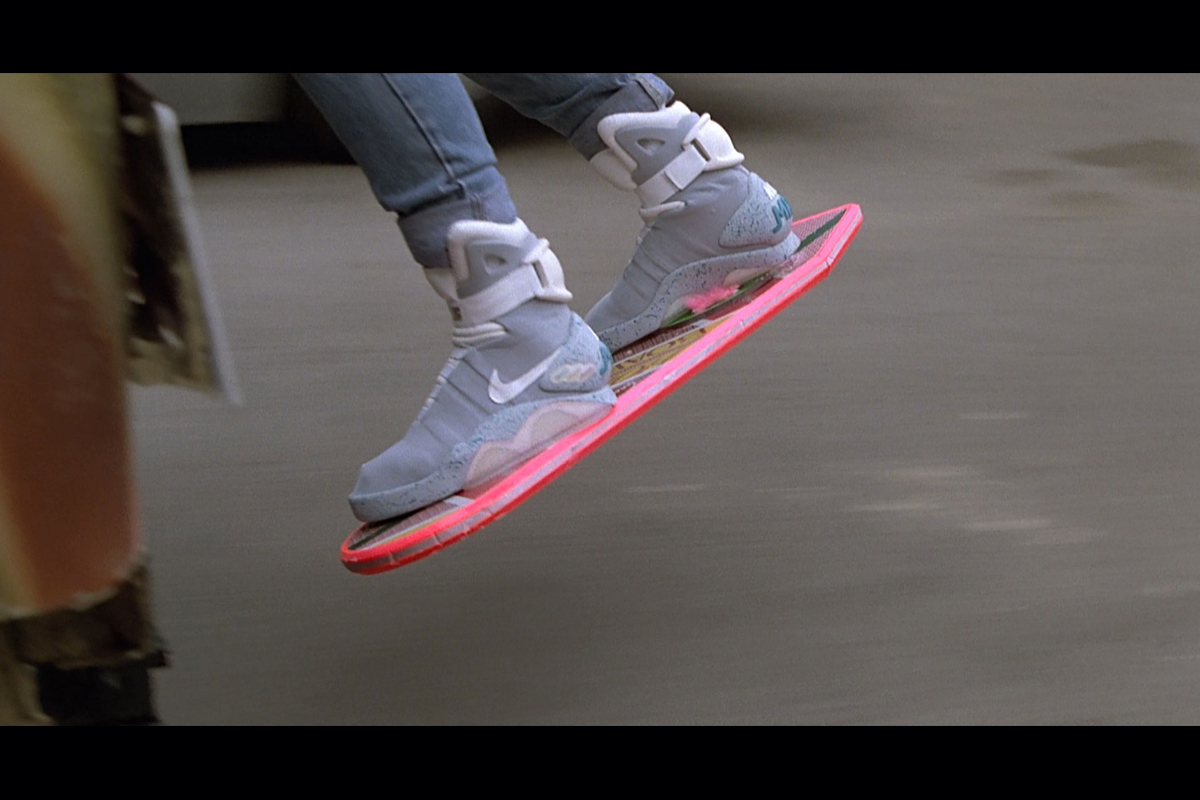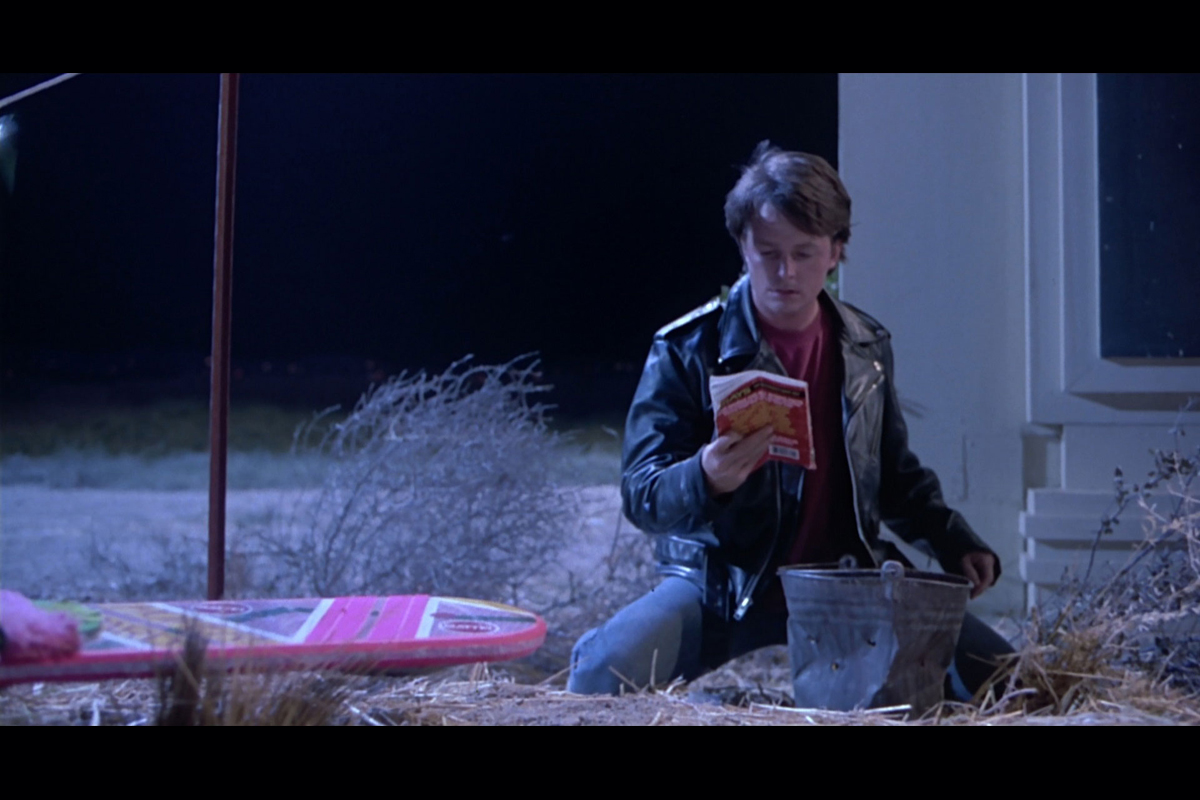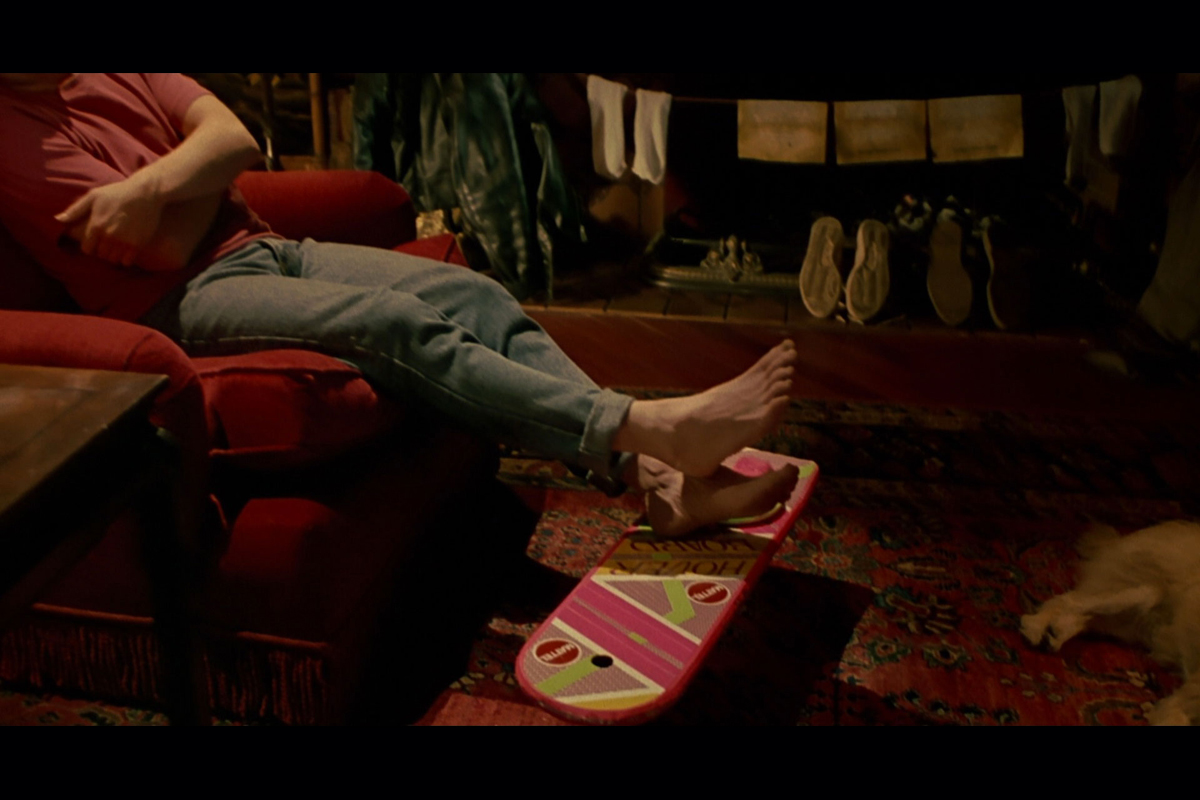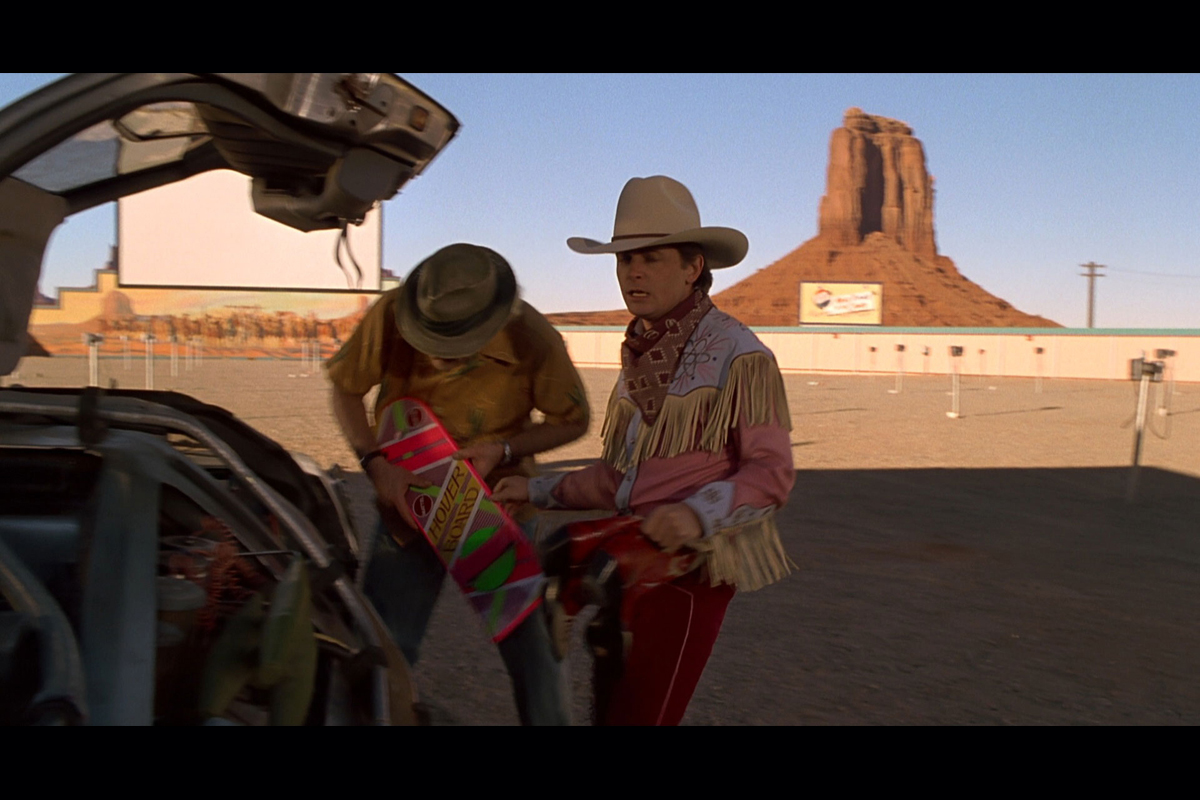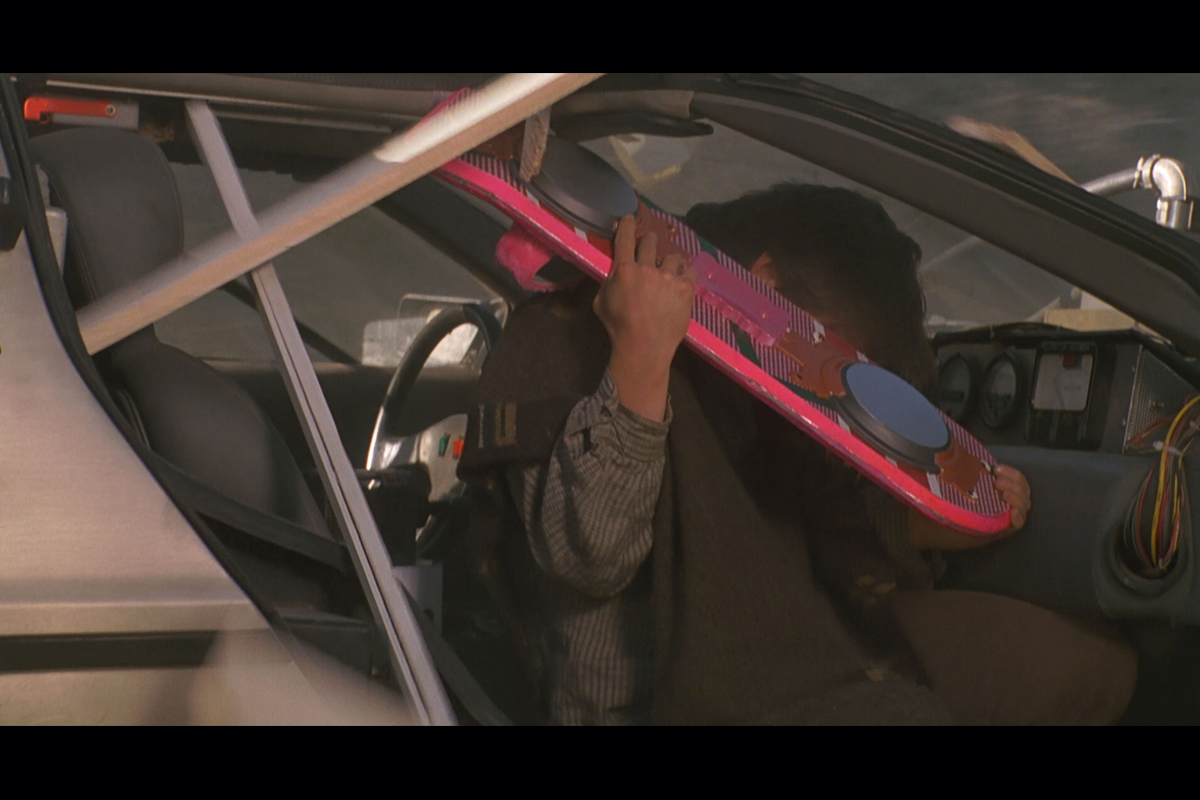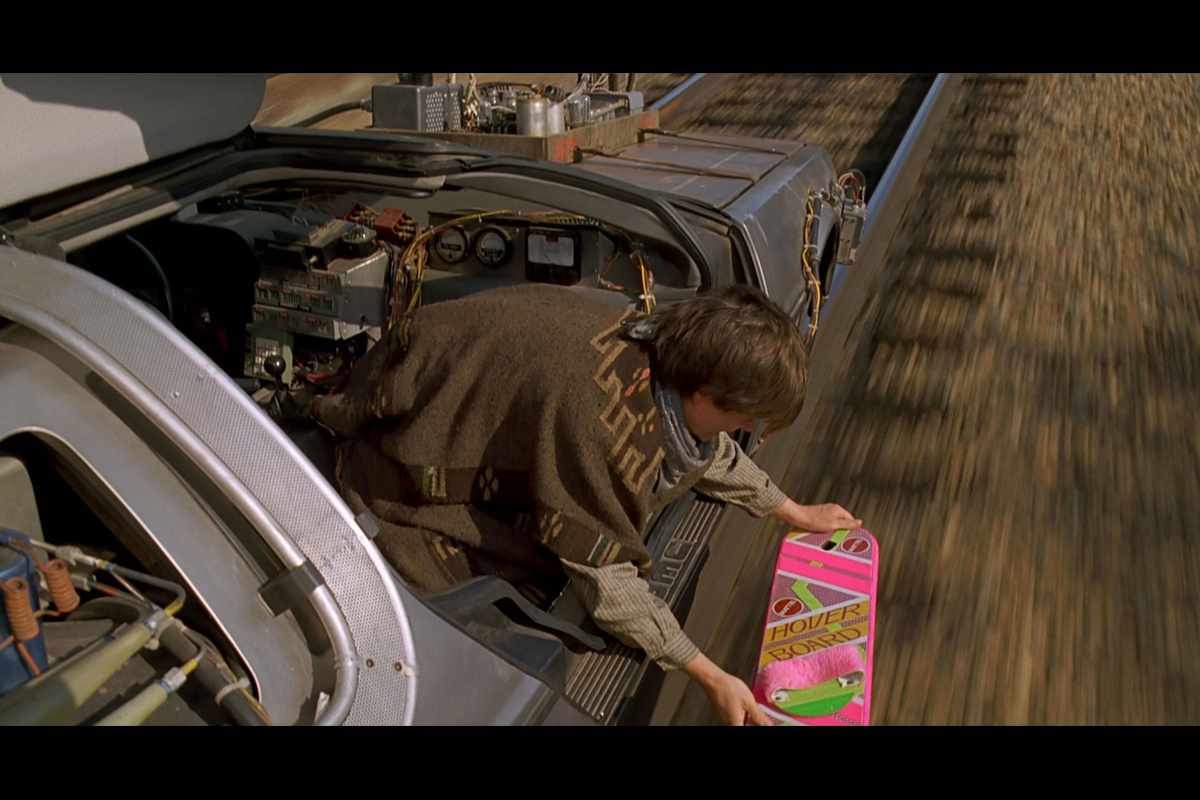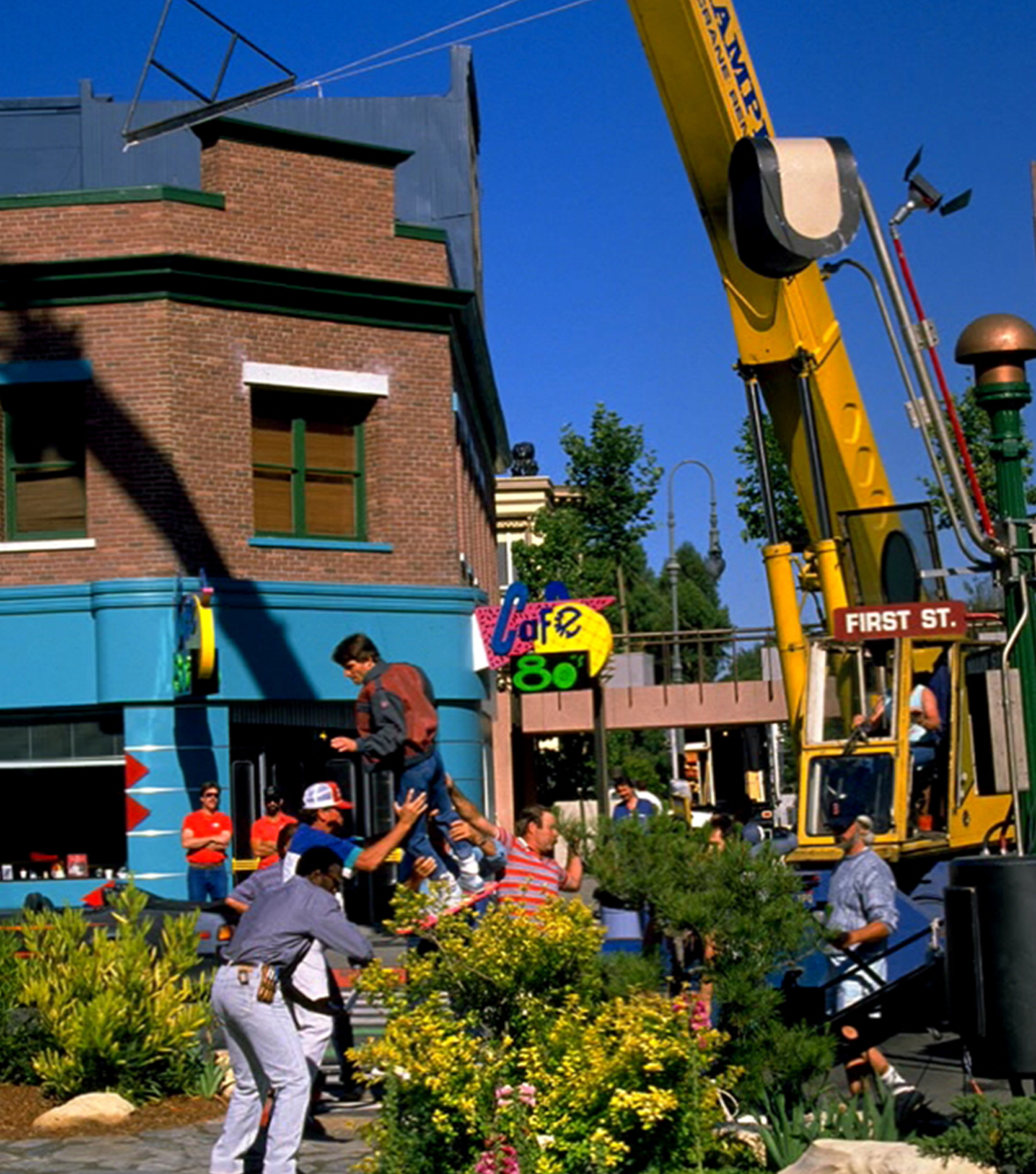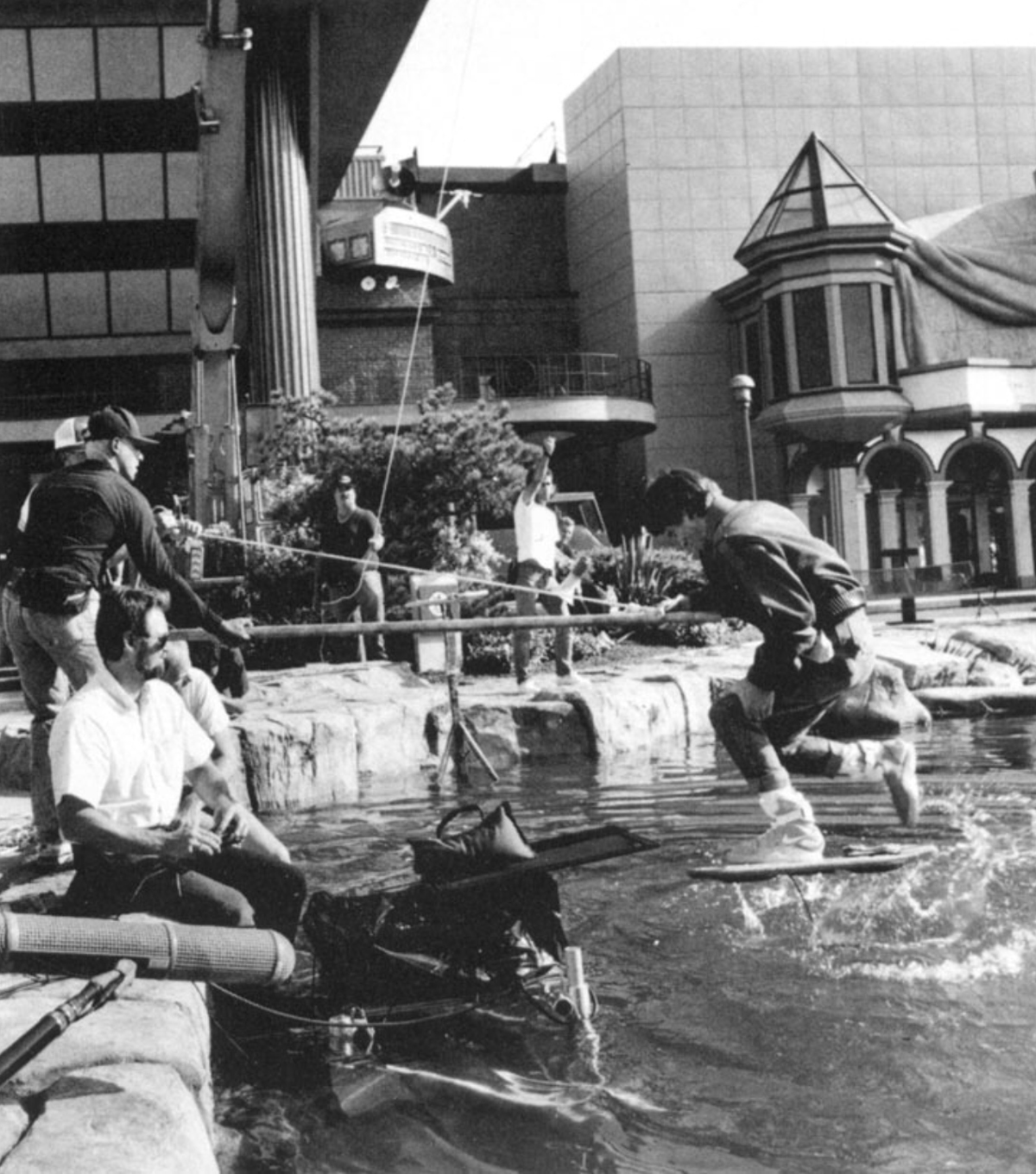Back to the Future Part II (1989) - Mattel Hoverboard
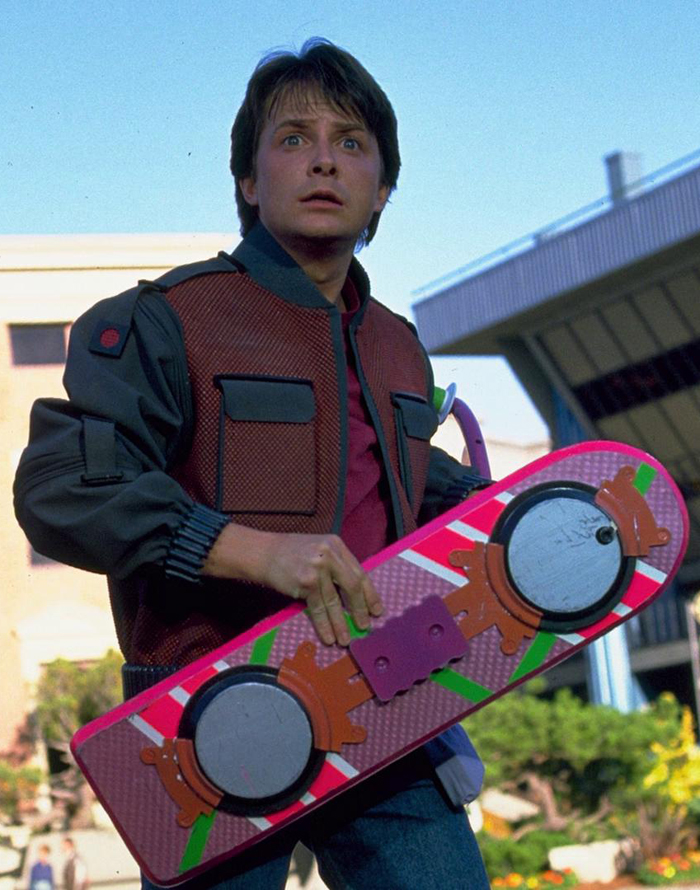 Back to the Future Part II is the second instalment in the popular science fiction adventure comedy trilogy directed by Robert Zemeckis. Starring Michael J. Fox as student Marty McFly and Christopher Lloyd as Doc Brown, an eccentric scientist responsible for the invention of the DeLorean time machine in which they travel through time. In this second instalment the duo travel to the year 2015 in an attempt to prevent Marty's future son going to prison, this yields disastrous results when Biff Tannen (Thomas F. Wilson) steals the DeLorean time machine and travels back to 1955 with a almanac containing sports results making his younger self wealthy and successful which changes the time line for the worse.
Back to the Future Part II is the second instalment in the popular science fiction adventure comedy trilogy directed by Robert Zemeckis. Starring Michael J. Fox as student Marty McFly and Christopher Lloyd as Doc Brown, an eccentric scientist responsible for the invention of the DeLorean time machine in which they travel through time. In this second instalment the duo travel to the year 2015 in an attempt to prevent Marty's future son going to prison, this yields disastrous results when Biff Tannen (Thomas F. Wilson) steals the DeLorean time machine and travels back to 1955 with a almanac containing sports results making his younger self wealthy and successful which changes the time line for the worse.
The production team faced a big challenge in creating the futuristic version of Hill Valley and it was the vision of designer Rick Carter we see on screen, after almost two years in the making. One of the most memorable parts of the movie is the chase sequence where Marty escapes from Griff and his gang on the future equivalent of the skateboard, the Mattel Hoverboard which he borrows from a little girl. Marty subsequently hangs on to the Hoverboard and it goes on to feature in some of the key scenes of both Back to the Future Part II and III including the aforementioned chase scene, the retrieval of the Almanac where Biff attempts to run him over and in the exciting train climax in the third instalment where Doc and Clara use it to escape the train before it plunges over the ravine. The Hoverboard had gone on to be synonymous with the trilogy and a part of popular culture.
Despite the belief at the time that the Hoverboards were a real product, not helped by director Robert Zemeckis' behind the scenes tongue in cheek interview, the scenes were actually filmed using a variety of special effects techniques. The sequence fell at the door of the special effects experts at Industrial Light & Magic (ILM) who initially considered the use of puppets against bluescreen although it was soon decided to achieve the sequence practically under special effects supervisor Michael Lantieri who utilised a variety of techniques to achieve the shots required. Actors were placed in harnesses, Hoverboards on piano wires and rigs, rare earth magnets were also used in some shots where the boards are seen to hover, any instances of being able to see wires or rigs could then be removed in post production by ILM.
Different types of Hoverboards were created by the production to fulfil various filming requirements, some wooden close up boards and other less cumbersome lightweight boards which were constructed from styrofoam and used for some flying shots and also of Michael J. Fox handling and throwing them around. This board is an original used during the production, of styrofoam construction it features an original footpad and hand applied Velcro strips, it also sports the original vacuum formed hover pans to the underside. Measuring an impressive 28" in length it displays some minor wear from production use it remains in generally excellent condition and represents a rare example of a fully complete and original Hoverboard.
A rare example of an instantly recognisable prop and an iconic artefact from one of the most popular movie franchises in cinematic history.

